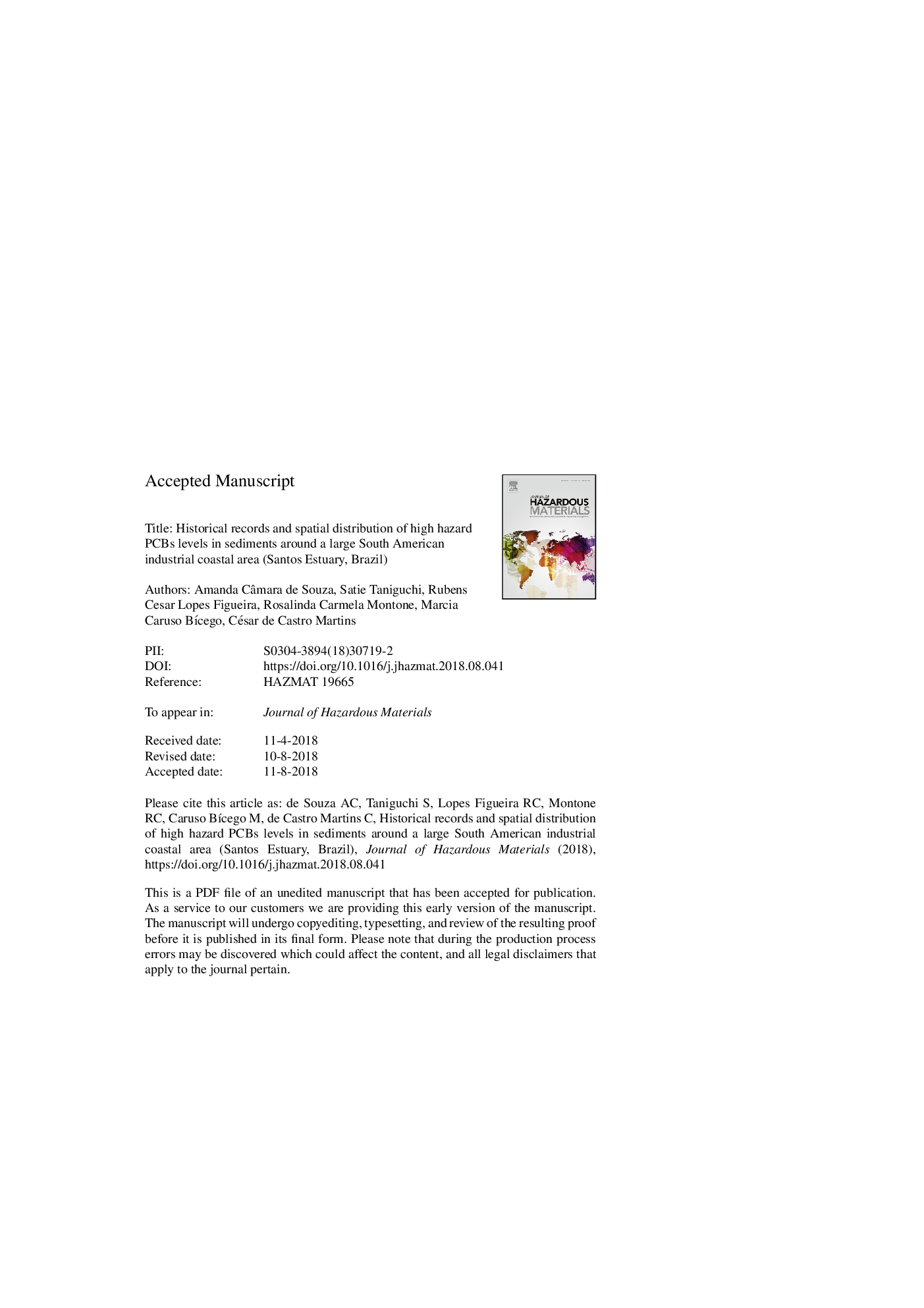| Article ID | Journal | Published Year | Pages | File Type |
|---|---|---|---|---|
| 11003008 | Journal of Hazardous Materials | 2018 | 33 Pages |
Abstract
The depositional history of polychlorinated biphenyls (PCBs) was studied from surficial sediments and three sediment cores sampled in the Santos Estuary, an important industrial and urban centre in South America. The maximum concentration (190.7âng gâ1 dry weight) and inventory (295.50âng cmâ2) were detected in sediments related to the 1980s, representing a ten-year delay of the emission peak in Brazil. PCB consumption, the congener patterns, and multivariate statistical analyses indicated that the levels started to increase with the intensification of regional urban and industrial development that continued to interfere in the magnitude of input during the past 50 years. In addition, the risk assessment indicates that levels observed in most of the samples are in a range capable of producing ecological risks to the marine biota. This study provides the first estimates of historic sediments PCB inventories in the Southwestern Atlantic, contributing data for regional and global management and highlighting the role of sediment as a compartment for permanently storing POPs and the risks involved in their resuspension, especially in regions that are constantly dredged such as the Santos Estuary.
Related Topics
Physical Sciences and Engineering
Chemical Engineering
Chemical Health and Safety
Authors
Amanda Câmara de Souza, Satie Taniguchi, Rubens Cesar Lopes Figueira, Rosalinda Carmela Montone, Márcia Caruso BÃcego, César C. Martins,
